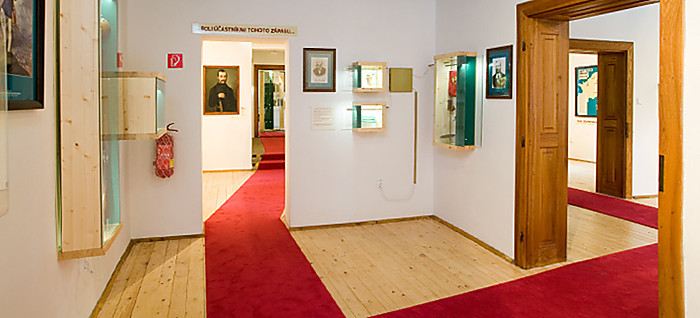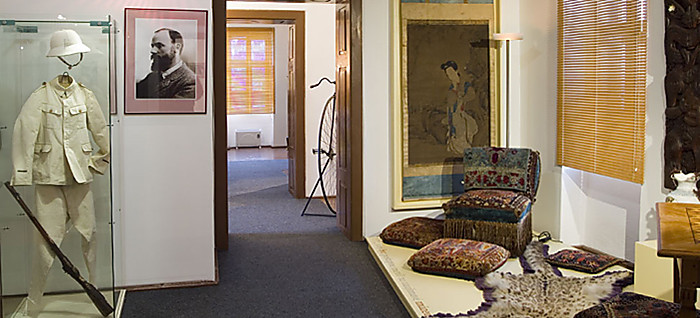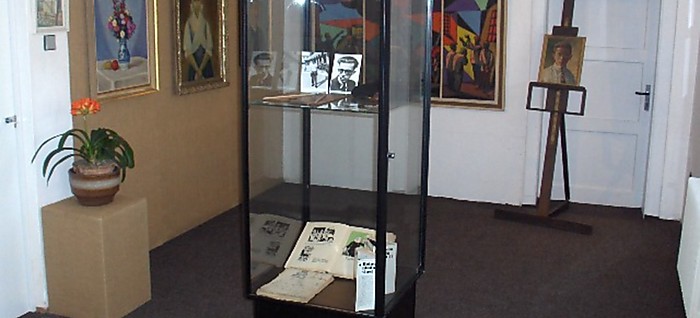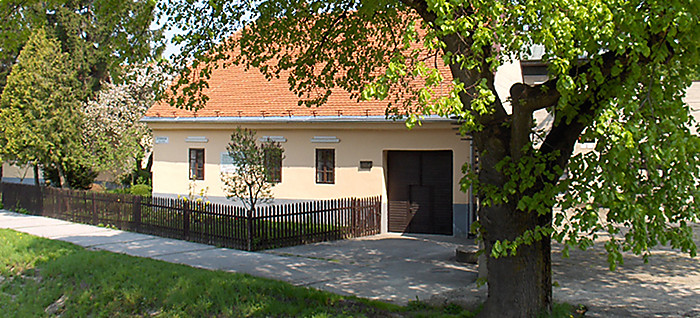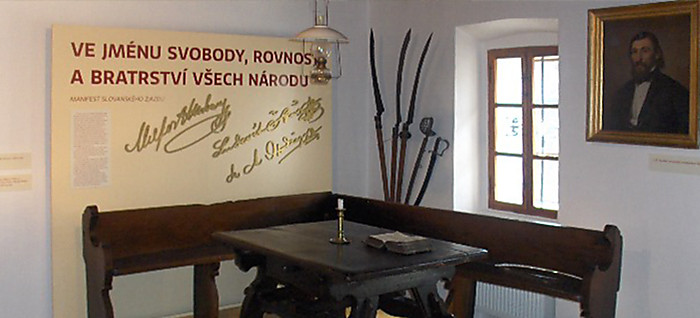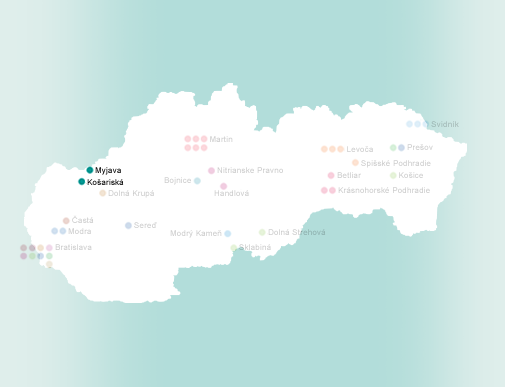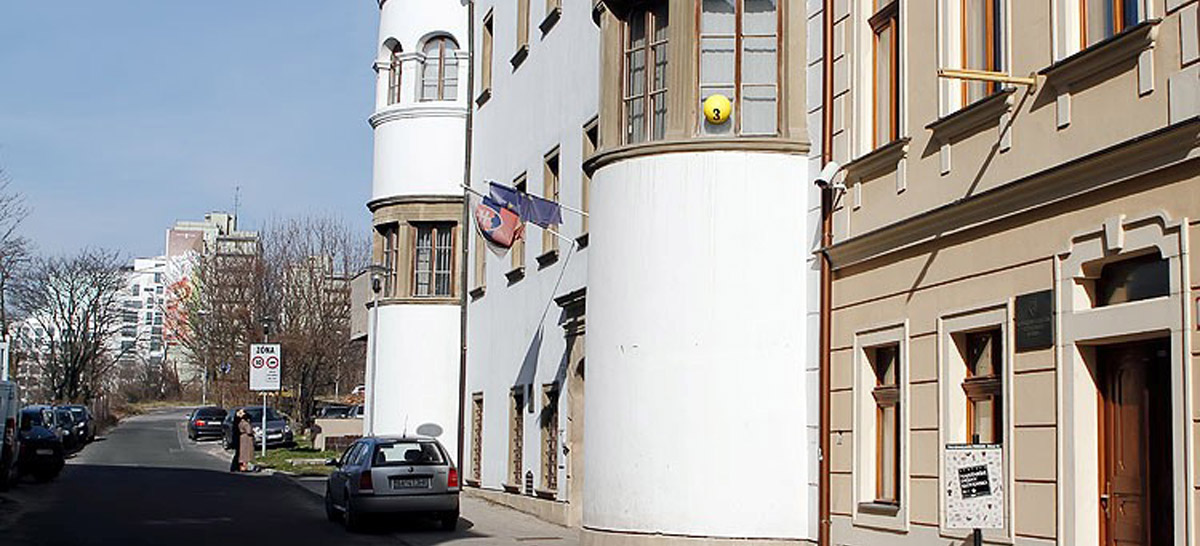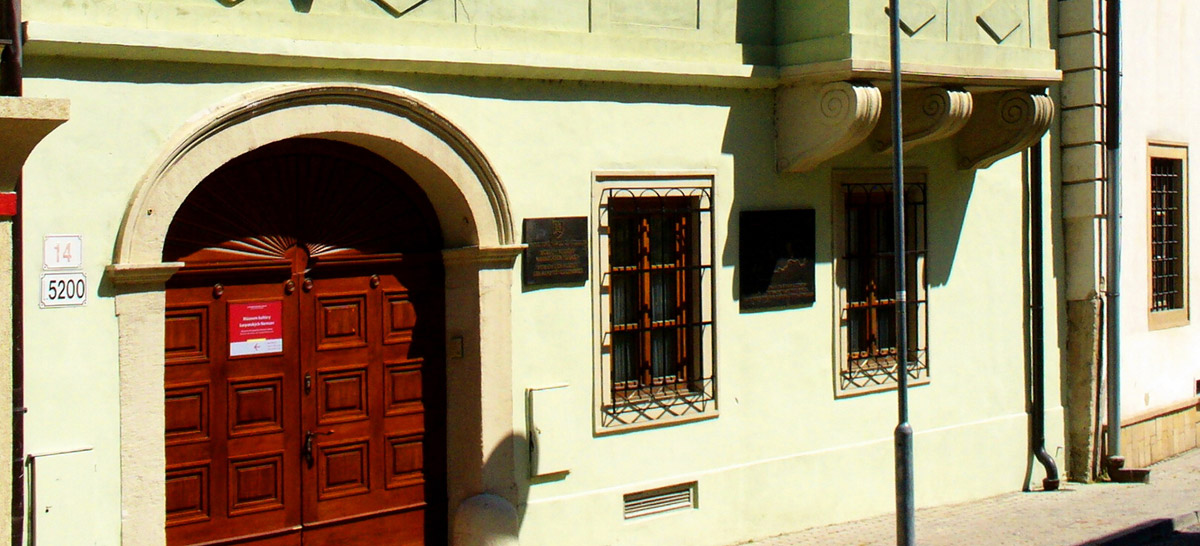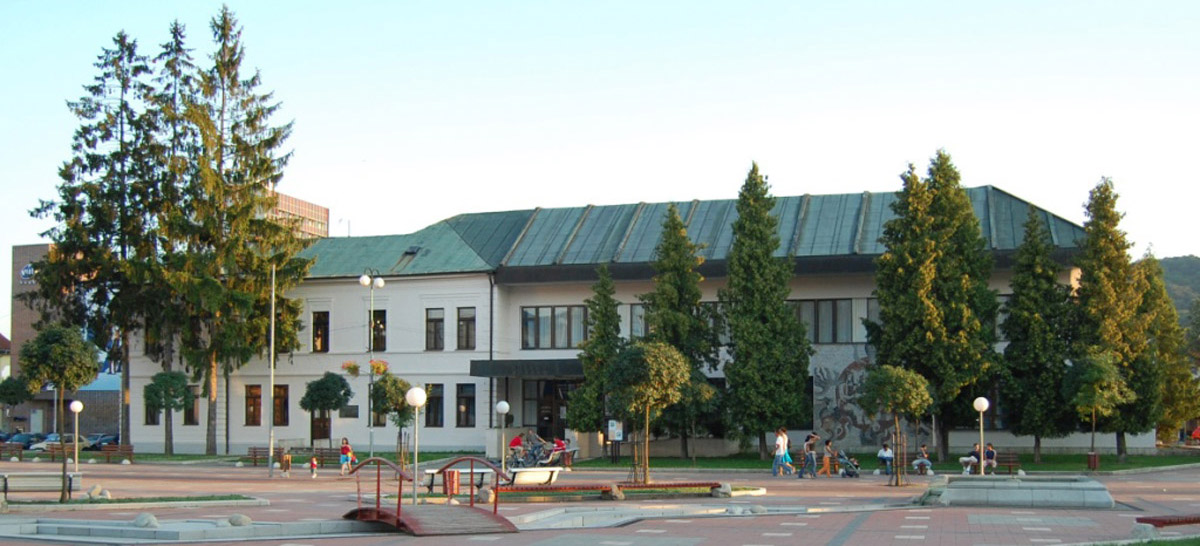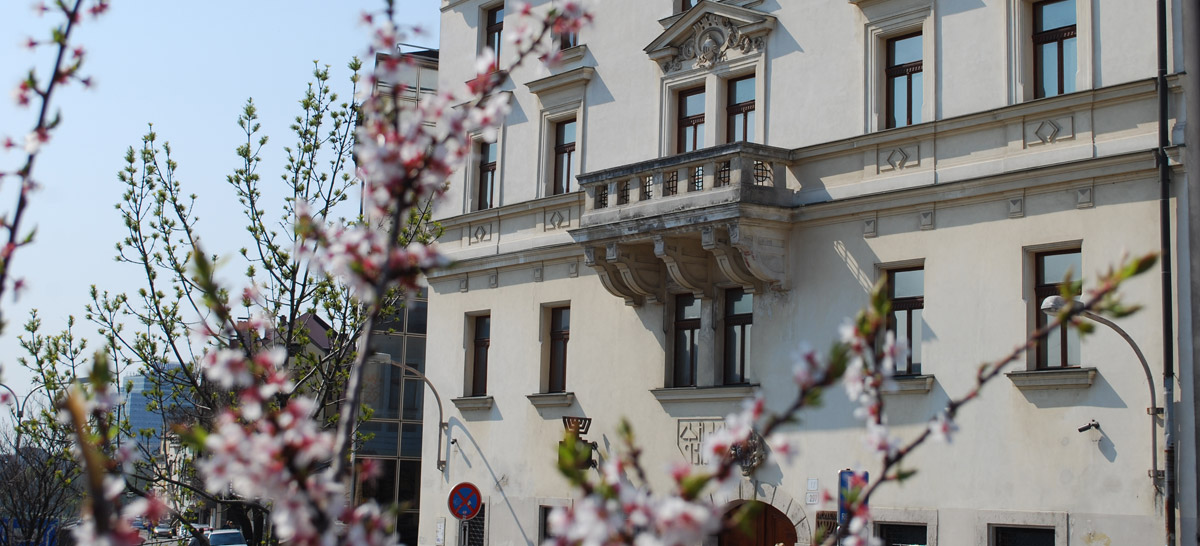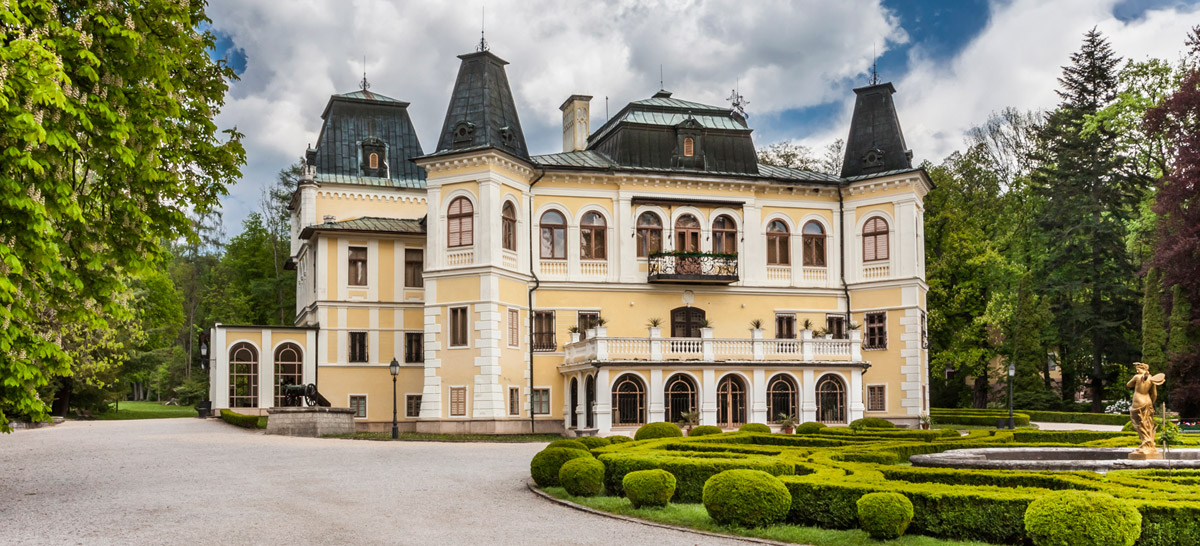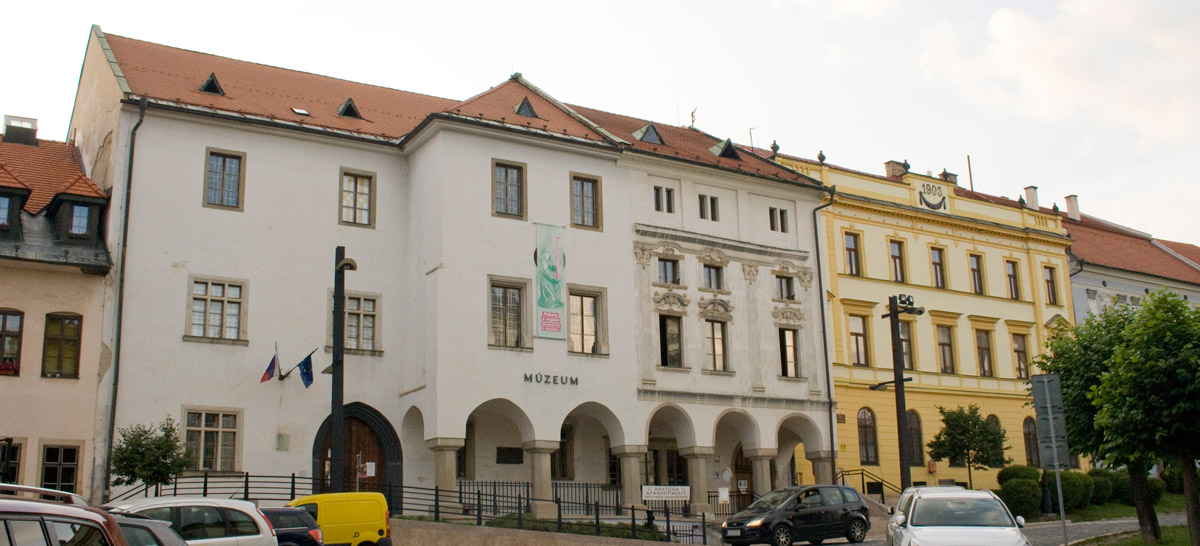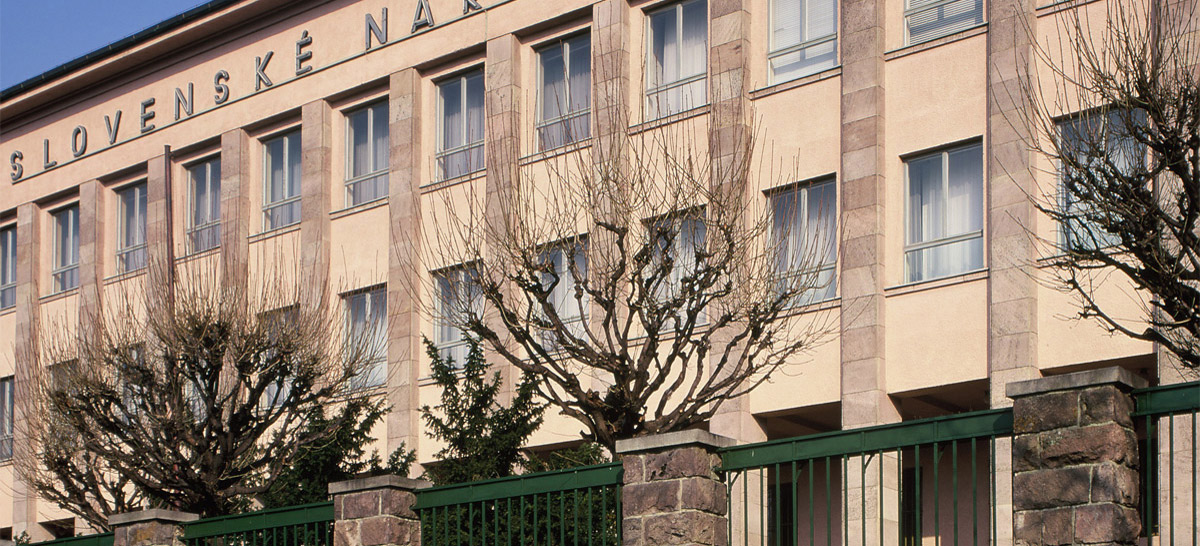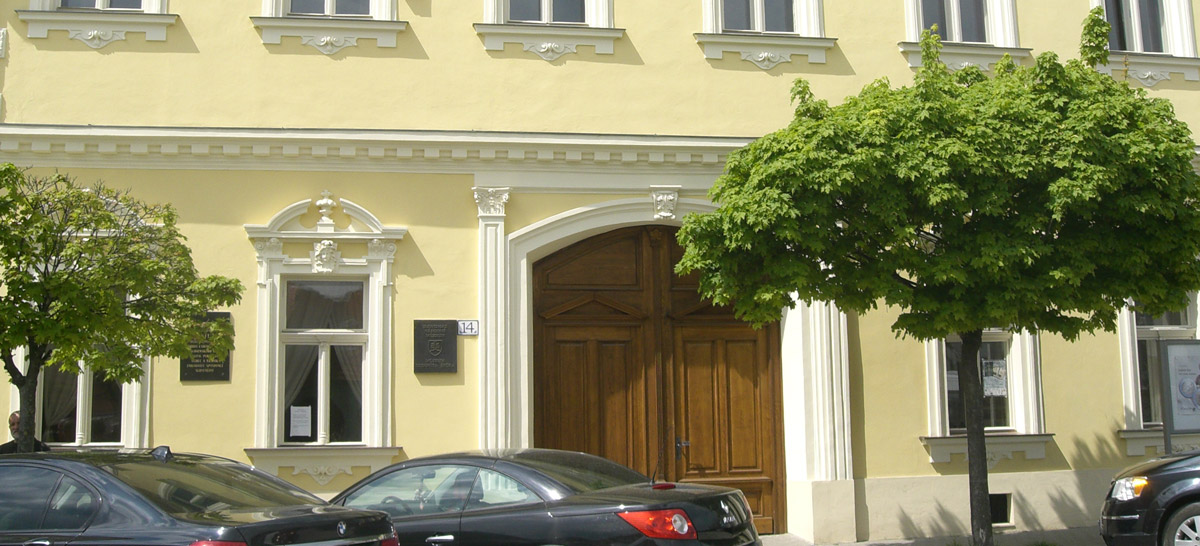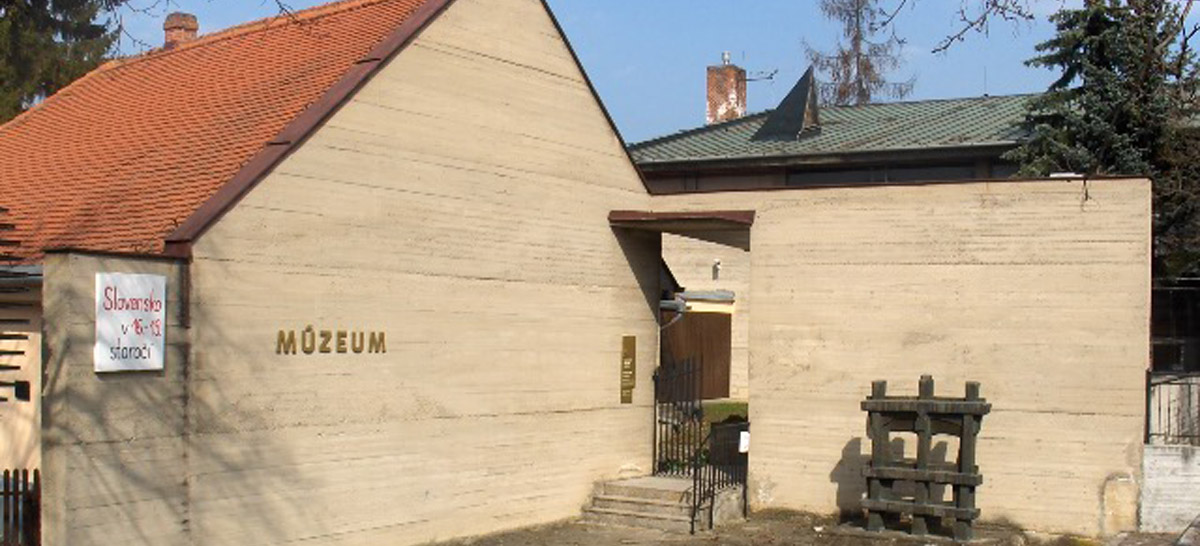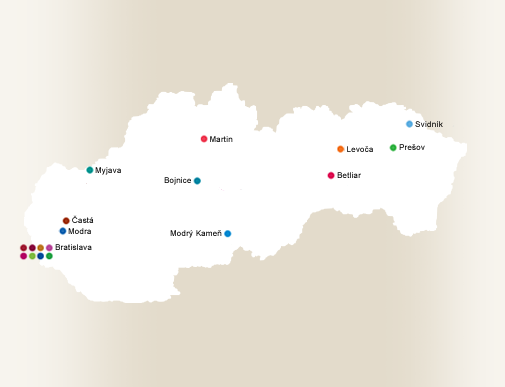Slovak National Councils in Slovak History
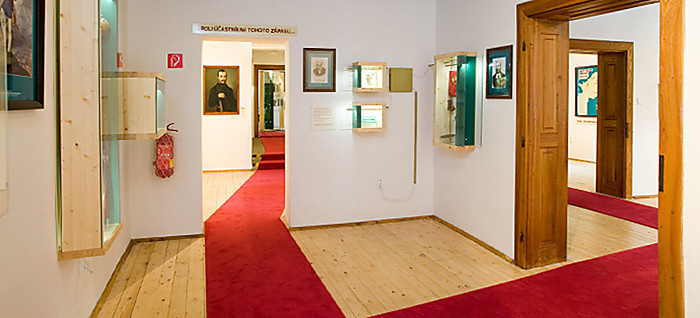
The initial part of the exhibition covers the period of the revolutionary years 1848/49 – with a large historical map of the part of Europe covering Slovakia, entering into the stage of European history. An arched gate with a copy of the historical flag with a symbolic bell above it evokes Hurban’s verses “A bell of freedom tolls”... Following in the exhibit are documents from the years 1848/49. The appeals of the Slovak nation are mounted on the background of a large painting of the people’s assembly by Emil Bohúň. Equally impressive is a picture of volunteers with a real carriage and gear. A Slovak lime tree standing in the middle overgrows the space with its height, like the nation, applying for its rights.
Following in the exhibit are portraits of representatives of the first Slovak National Council as well as seals, decrees, warrants, and centres of additional volunteer expeditions. Passing by the guard booths with legionaries, visitors come to the 20th century, specifically to the period of World War I. This is the background to the Cleveland Declaration, the Pittsburgh Treaty, the Manifesto of the Czech and Slovak National Council, the Czech and Slovak Legions and the Martin Declaration, which gave birth to another map of Europe and the new state of Czechoslovakia. A symbolic brick construction on the floor develops in arced twists in the same way the nation grew and matured to gain its statehood.
The next exhibit covers the birth of the second Slovak National Council and its destiny as an institution as well as the destinies of its main participants. Although the issue of becoming a state remained unclear at that time, the idea of a nation was still alive – flags of national associations blowing on the poles, celebrations of the 10th anniversary of Pittsburgh Treaty, Pribina celebrations, attempts for autonomy and establishment of the Slovak Assembly. World War II starts and the Slovak state is established (the first Slovak Republic). The Slovak nation matures in these tough years and proves through the third Slovak National Council and the Slovak National Uprising that Slovaks want a democratic nation. In front of our eyes, the years 1944- 1948, and 1948-1965 come back to life as well as the revolutionary year of 1968, the Law on the Czechoslovak Federation, the years of the normalisation process and last but not least, keys ringing in November 1989 when statehood and its pursuit again made it to the agenda.
Next are the years 1990-1991, adoption of the Declaration of the Slovak National Council on Slovak sovereignty in 1992, adoption of the Constitution of the Slovak Republic on September 1, 1992 and the birth of a new state on the European map – the Slovak Republic on January 1, 1993. All of these exhibits are complemented by audiovisual and multimedia technology which allows visitors to expand their knowledge in each area. In this regard, the exhibition of the Museum of the Slovak National Councils fulfils the needs of a 21st century visitor.

